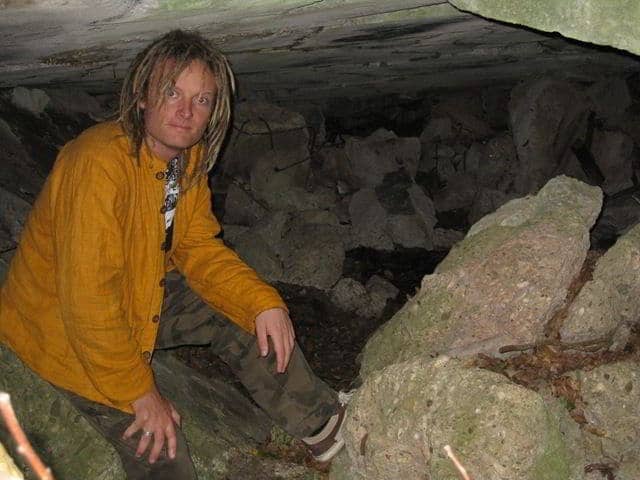When one mentions Hitler’s bunker, the mind is usually drawn to the Berlin based complex where the last few days of the war panned out for the man himself. However, this wasn’t the only bunker that Hitler had, even if it was the most famous. Hitler had fourteen bunkers in total, situated in various strategic locations, which served as field headquarters during the war. He also had a train, which served as a mobile command post.
The bunker near the cottage was known as the Felsennest, or Rocky Eyrie, and it was one of Hitler’s first field headquarters during the war. A fairly simple four room affair, it was used by him earlier on in the war, when things were going fairly well for the German army. It was from here that he coordinated the invasion of France and the other low countries on May 10, 1940. He was also here during the battle of Dunkirk. Key members of the German command visited during this period, including Goring and Himmler.

These days therefore, quite a bit of imagination is required to get an idea of what the site may have looked like. What is left are giant boulders of concrete with steel reinforcement rods poking out haphazardly, spread across a wide area. Where the bunker itself was is merely a hole in the ground, the force of the explosion having pushed out all the concrete to form a vague rim.

We left the bunker and returned to the cottage, quiet in our thoughts. On the way, we crossed the field which served as the airstrip to ferry dignitaries to and from the site. It was hard to believe the events that happened here, in what seemed to be a sleepy little village on a hillside, set in rolling fields with cows all around. Once these skies played host to heavily armed aircraft, and the hills to soldiers. It certainly gave me a lot to think about and reflect upon.

Norbert says
Your description of Felsennest’s surrounding areas look so similar to the Wolf’s Lair – Hitler’s Main Bunker in Poland (where he spent most of the latter part of the war). It’s curious and interesting to see the history behind the bunkers where Hitler spent most of the war and how he moved strategically through them.
I think the same rail line you described here connects to the Wolf’s Lair (complemented with an air strip).
Here’s my post on my visit to the Wolf’s Lair – http://www.globotreks.com/destinations/wolfs-lair-hitlers-bunker-poland/
Laurence says
Hey Norbert, thanks for the comment and sharing your post, I love the
photos in particular. What strikes me most about these bunkers is how
quickly they go from impregnable fortresses to tumbled down and
overgrown piles of misshapen concrete, plus the amazing sense of
history. I found a number of black and white shots online of the bunker
I visited, and how it used to look, which was a great help to make sense
of it all.
Norbert says
Your description of Felsennest’s surrounding areas look so similar to the Wolf’s Lair – Hitler’s Main Bunker in Poland (where he spent most of the latter part of the war). It’s curious and interesting to see the history behind the bunkers where Hitler spent most of the war and how he moved strategically through them.
I think the same rail line you described here connects to the Wolf’s Lair (complemented with an air strip).
Here’s my post on my visit to the Wolf’s Lair – http://www.globotreks.com/destinations/wolfs-lair-hitlers-bunker-poland/
Laurence says
Hey Norbert, thanks for the comment and sharing your post, I love the
photos in particular. What strikes me most about these bunkers is how
quickly they go from impregnable fortresses to tumbled down and
overgrown piles of misshapen concrete, plus the amazing sense of
history. I found a number of black and white shots online of the bunker
I visited, and how it used to look, which was a great help to make sense
of it all.